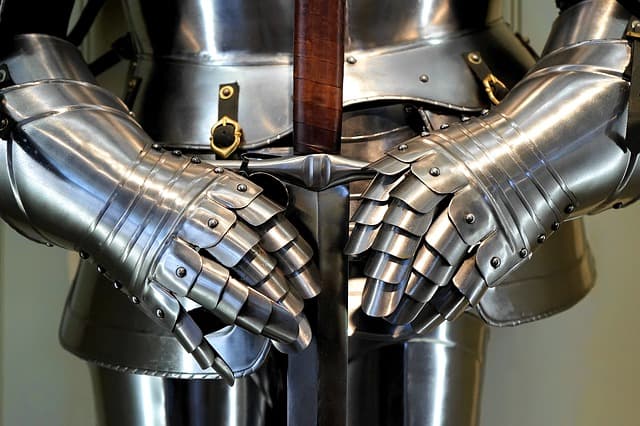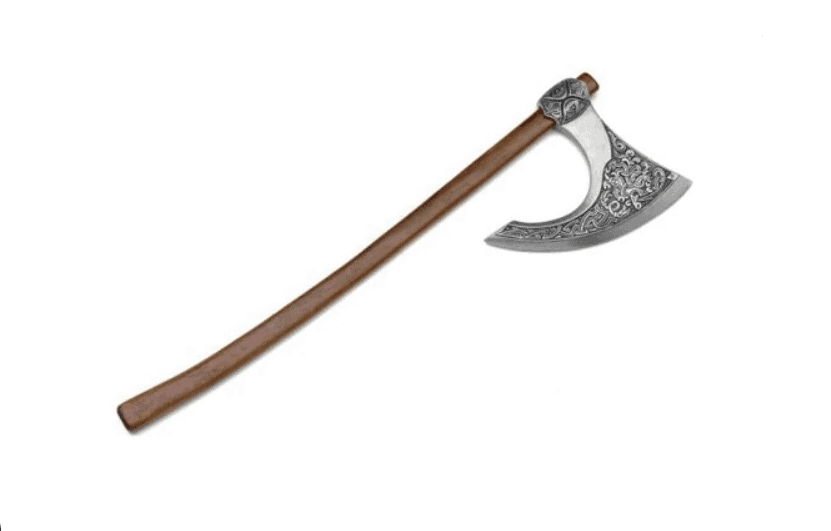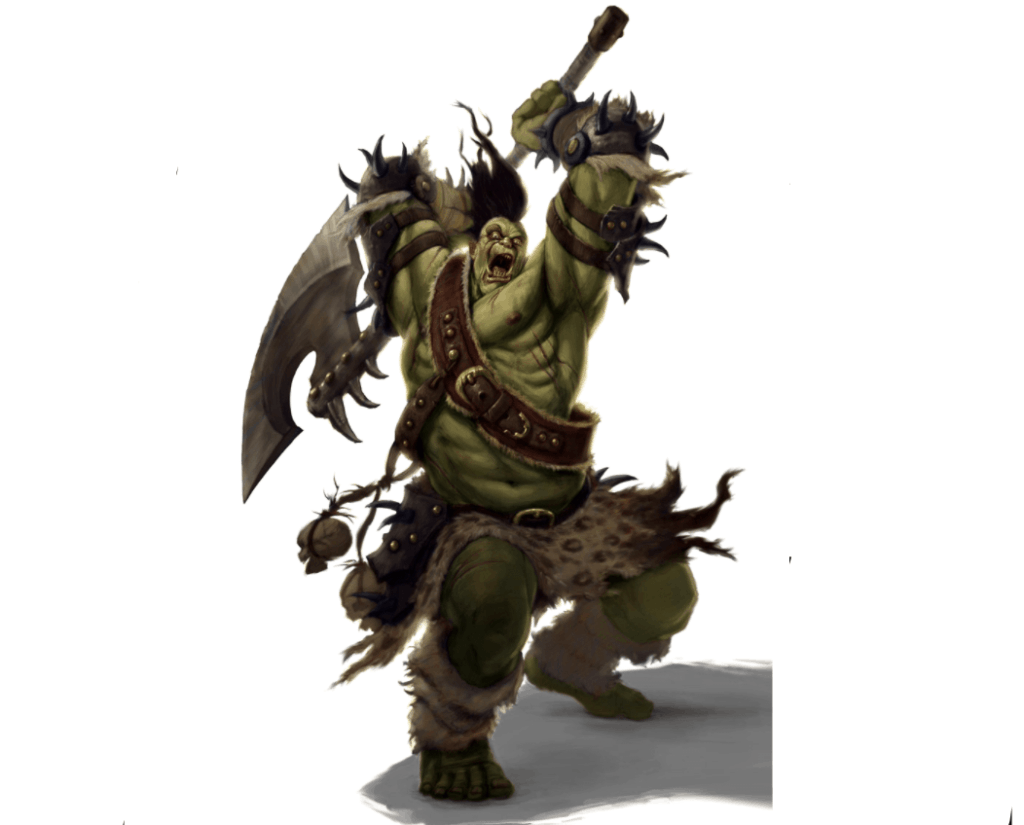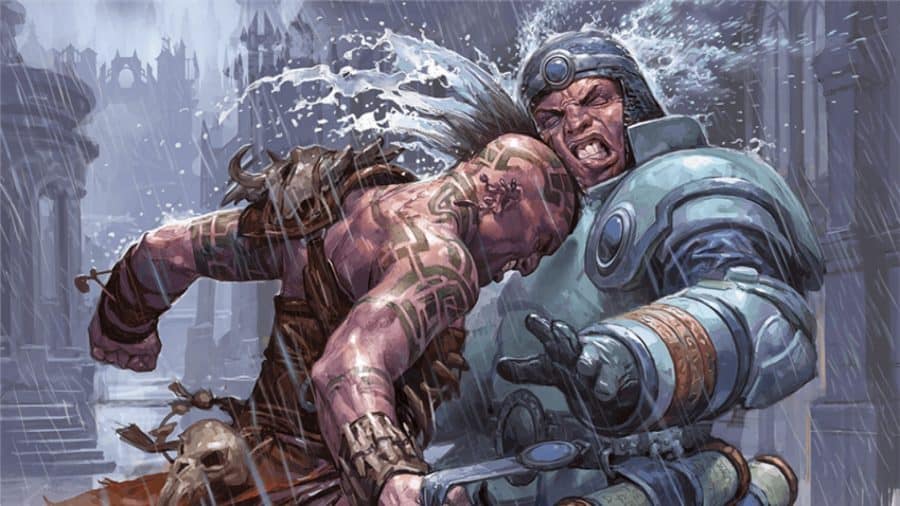If you really want to play a customized character within D&D, feats are the way to go. Feats are skills that you get at various levels of the game, that don’t only open up new ways of play but can also help to customize your character.
Do you have a bard with a taste for the flamboyant? Then the actor feat which gives extra charisma and skills with mimicry can be very helpful. Do you want a barbarian who fights with his fists? Then you can take the grappler feat to hold your own in close quarters.
Of course, some feats are more feasible and usable than others. Some you might find yourself using all the time, while others are more of a niche tool. Some feats might even be considered overpowered if you match them with the right build. One of these feats is the ‘Great Weapon Master’ feat, which can be pretty interesting if you use it correctly.
It’s also a feat that many players fight over. Some think it is overpowered, others think it is flat-out broken, and some have even banned it from their games. It’s right up there with feats like ‘Lucky’ and ‘Sharpshooter’ and this article is going to let you decide for yourself.
What Is a Great Weapon Master?

According to the Player’s Handbook, the great weapon master feat gives a character the following benefits:
- “Before you make a melee attack with a heavy weapon that you are proficient with, you can choose to take a -5 penalty to the attack roll. If the attack hits, you add +10 to the attack’s damage.
- “On your turn, when you score a critical hit with a melee weapon or reduce a creature to 0 hit points with one, you can make one melee weapon attack as a bonus action.”
Let’s break each of these benefits down. First, before you make an attack with a heavy weapon you are proficient with, you can sacrifice accuracy for damage on the blow. For example, if you are a 4th level fighter armed with a greataxe, here’s what the numbers would look like.
At the 4th level, the attack modifier is +5 (+3 for strength and +2 for proficiency) and a great axe does 1d12 slashing damage. If your fighter uses the feat, then they get an attack modifier of zero and roll a straight d20. If they manage to get a hit in, then we calculate the damage like this: 1d12 + 3 + 10= total damage.
Critical hits with the feat don’t change the damage, as you are only doubling the d12 roll and not the modifiers, so if the attack above was a crit the damage would be calculated like this: 1d12 x 2 + 3 + 10.
The second benefit allows you to strike more often if you make a critical hit, or if you kill a creature with a melee weapon. If our fighter above critted with their greataxe, then he could lash out with another attack as a bonus action.
This allows your weapon master to slash and slice their way through smaller mobs and even strike down the big bad because an extra 10 damage is nothing to sneeze at, especially since heavy weapons do a ton of damage on their own.
Read our full guide to D&D Weapons.
What Weapons Work With the Feat

There are six weapons that have a heavy property in the base game, although 3rd party and homebrew content also can have the property according to your DM.
- Glaive
- Greataxe
- Greatsword
- Halberd
- Maul
- Pike
You also need to have proficiency in them, but since most fighters and barbarians have proficiency with all types of weapons by default, you shouldn’t have to worry about that. Still, your character will be relying on their weapons and natural AC for protection, rather than carrying a massive shield around.
When Should You Use Great Weapon Master?

Now, a great weapon master does have some disadvantages for its high damage output, and if you don’t factor those into account you could put your entire party at risk. We’ll mostly be looking at the first benefit because the second benefit is passive. If you kill a creature or crit with your weapon, then you can make another attack with a bonus action, so other than keeping your bonus actions in check when fighting a smaller mob, you don’t need to think too much about it.
You will need to consider when to use the active effect though, because reducing your chances to hit are pretty severe, especially at a low level. First, it requires being thorough about what can hit and what can’t when fighting a monster.
You can roleplay this as your character testing your opponent’s defenses, but you can analyze the fighting to see what the creature’s AC is. If your Monk misses with a 15 on their attack, your ranger hits with a 17, and your bard whiffs with a 14, it’s safe to guess that the creature’s AC is 16 or 17. You’ll learn more as the battle goes on longer, but even having a range for a guess is good enough.
Now you need to look at your to-hit bonus if you take away 5 from it. If you have 4 strengths and 2 proficiency then your bonus is +6 and that would drop to a +1 if you use great weapon master. +1 is better than zero, but you would need to roll a 15 or higher to hit the creature. Again, it’s not impossible, but also not the easiest thing to do either.
Once you’ve figured out the creature’s AC and what the feat would do to your roll if you take it, then you can make a guess if the roll will work for you. Now it’s a matter of the damage dice roll. Heavy weapons are pretty powerful, and adding a +10 is pretty powerful. It can take a massive chunk out of a boss’s HP pool.
When Should You Take The Feat?

You get feats at the 4th, 8th, 12th, 16th, and 20th levels. Not only do you have feats that you want to pick from, but some feats also have prerequisites that you need to work on. Now, a great weapon master is pretty interesting if you have optimized your character around combat, but if you happen to be playing a social game without too much in the way of combat, it might not be a good feat.
Plus you can also improve your ability scores instead of taking a feat, which might be worthwhile to do for your strength score in the early game. If you can get your strength score (and by extension your base attack bonus) as high as you can, then it can mitigate the -5 that you get from the feat.
You might want to wait until you are at a higher level, the tradeoff is that your enemies will grow more powerful in terms of AC if you wait, so make sure to keep that in mind.
Who Is Best Supported For The Feat?
Of course, fighters and barbarians are the best classes who can use this feat. They get a lot of extra attacks and their base attack bonuses are pretty high. They’ll be the ones reducing enemies to zero hp, and gaining the benefits of the passive effect of great weapon master, and they will also be able to have some room to work with their BAB, so the -5 won’t hurt as much.
Additionally, if you are playing a character who primarily uses a give or polearm then polearm master is a great feat to synergize with. Polearm master has these effects according to the Player’s Handbook:
- When you take the Attack action and attack with only a glaive, halberd, quarterstaff, or spear, you can use a bonus action to make a melee attack with the opposite end of the weapon. This attack uses the same ability modifier as the primary attack. The weapon’s damage die for this attack is a d4, and it deals bludgeoning damage.
- While you are wielding a glaive, halberd, pike, quarterstaff, or spear, other creatures provoke an opportunity attack from you when they enter the reach you have with that weapon.
The polearm master might seem like it clashes with Great Weapon Master, especially since both use bonus actions, however, both feats work well together. If your fighter uses a give and makes their attack with both ends of a polearm, then their attacks with the feat go like this:
For the normal attack it is 1d10 + BAB + 10, for the bonus attack with the end of the weapon the damage is: 1d4 + BAB + 10. Of course, both attacks suffer the -5 penalty, and the attack with the end of the weapon requires a bonus action, but these two feats can start an unstoppable combo if you have the right character to play them.
Great Weapon Master FAQ
Question: Is It Overpowered?
Answer: Well, yes and no. It depends on when it is used and how often it is used. It only gets overpowered whenever you can effectively mitigate the -5 penalty to attack rolls. If you or your party have spells, abilities, or feats that can give you bonuses to your attack rolls and you can still reliably hit the target, then you might find that the fighter has no reason not to use it.
The limiting factor on the Great Weapon Master feat is the tradeoff between accuracy and damage, and if the tradeoff goes away then there is no reason for someone to not use the feat. That’s extra ten damage with nearly every single hit, and that can get overpowered quickly.
However, you do need to remember that the feat might be very powerful in the early game, but as AC’s start to get higher and higher, even mitigating the -5 to attack might not be worth it. If enemies have very high AC, then your warrior will need every point of BAB they can get to land a hit. Plus, higher-level enemies have a higher health pool, so while the feat user might one-shot lower-level enemies, they will only take a chunk out of the health pool of the higher leveled ones.
Question: How Do DM’s Fix It?
Answer: There are two ways that DM’s try to make this feat a little less overpowered. The first is by altering the various stats around the feat. They’ll change the +10 guaranteed damage to 2d6 or 1d12 to give some variety, make it so the feat can only be done with advantage or on a prone/restrained character (to symbolize the massive windup of a huge attack), or other rule changes.
However, this author and other DMs like to design an encounter around the player’s strengths and weaknesses. So the effectiveness of the attack can be mitigated by using monsters who have resistance, making monsters harder to hit, or by having fighters with ranged weapons so it is harder to close with the enemy.
Other fighters can try to use great weapon masters against the party. So many DMs forget that human opponents, especially opponents with combat experience, might use the same feats and abilities that the players will use. Don’t be afraid to have other fighters or barbarians engage the party with that feat as well.
Question: What Are The Best Monsters to Mitigate Great Weapon Master?
Answer: If a DM wants to throw everything they’ve got at a great weapon master fighter or barbarian, then some of the best monsters to use are monsters with a high weapon damage resistance and a very high AC. For example, higher level undead have resistances to several types of damage as well as a high AC. Monsters with large pools of health can also work too.
Additionally, you can go much smaller and have swarms of monsters as well. Swarms have a lot of damage resistance and there’s no way to reliably take them all out with one or two swings, so the feat is going to be a lot less useful.
- DnD Demons Guide: What Are Demons in 5e? - September 18, 2021
- Detect Thoughts 5e Guide: When, Why and How to Use It - September 9, 2021
- The Ultimate DnD Toll the Dead 5e Guide - September 9, 2021

